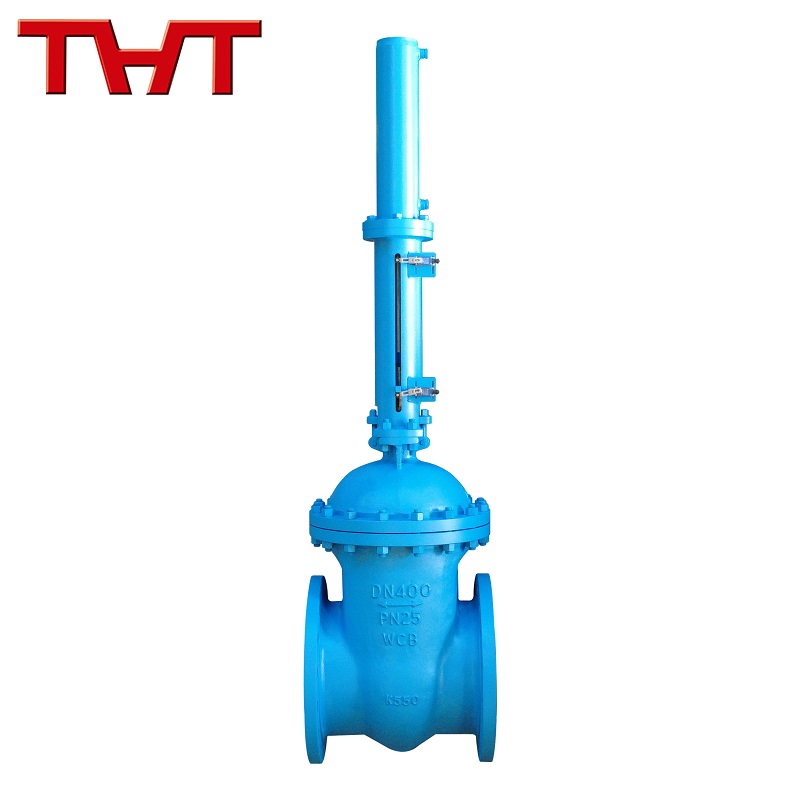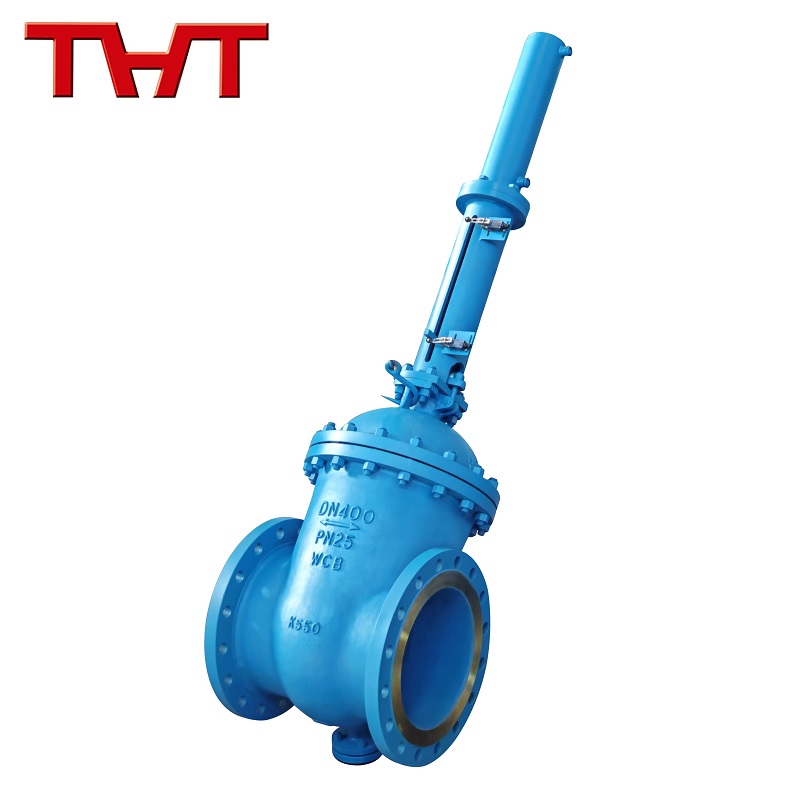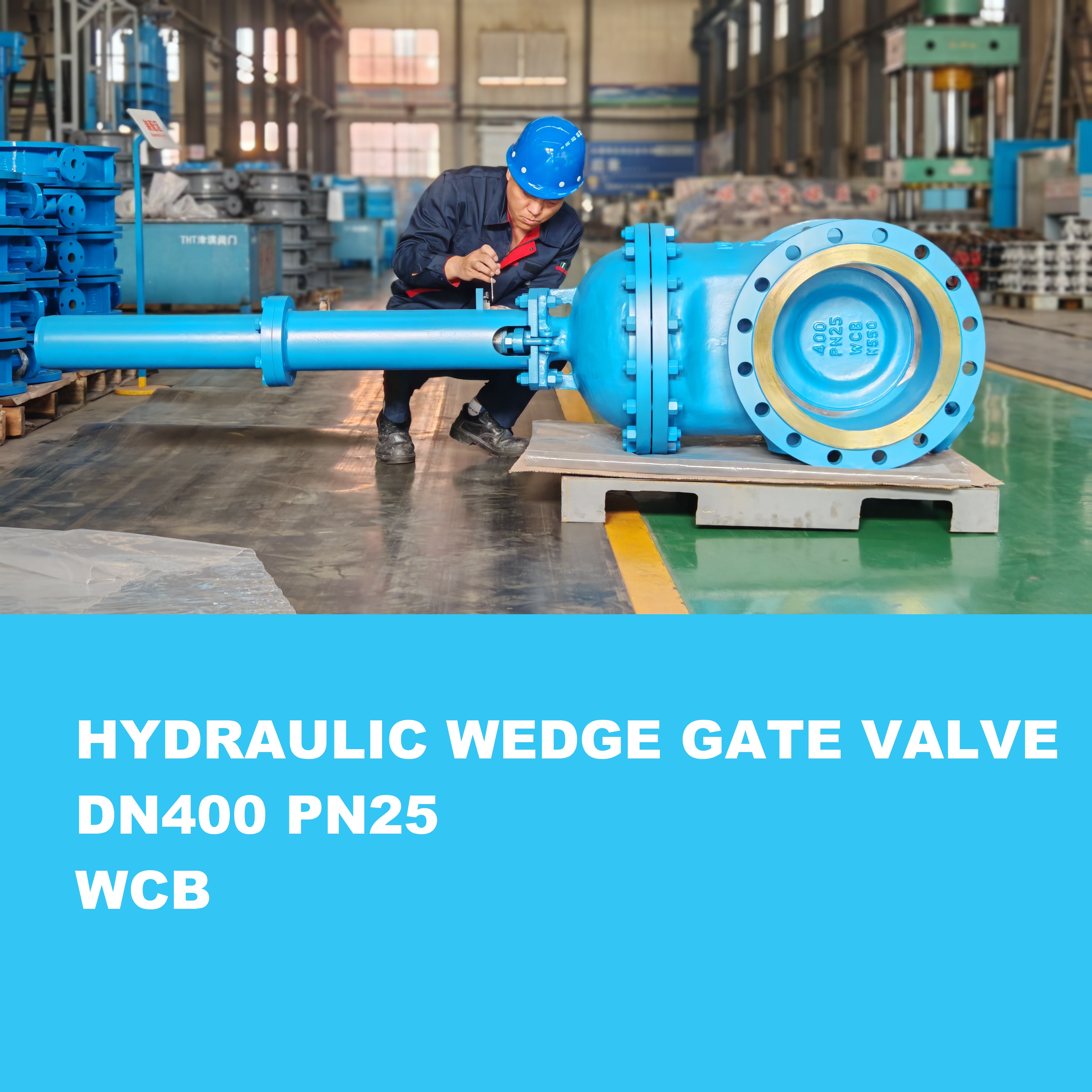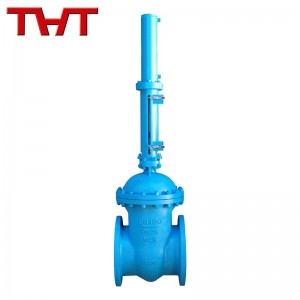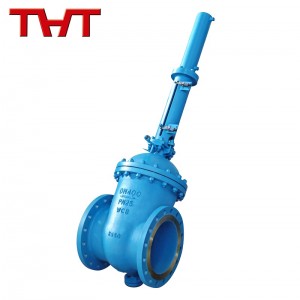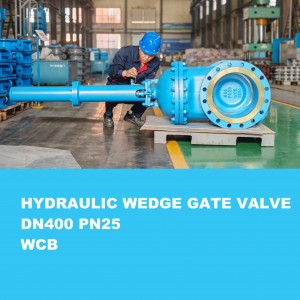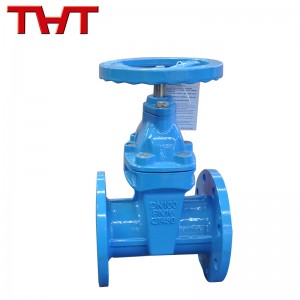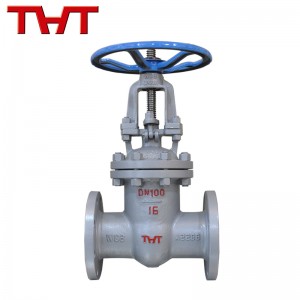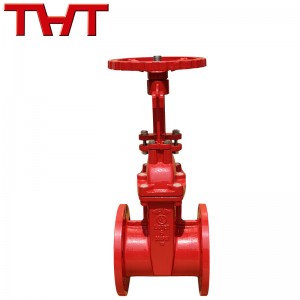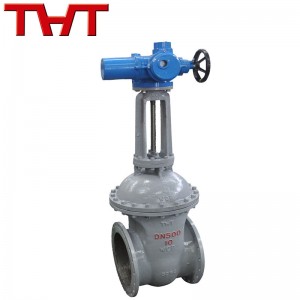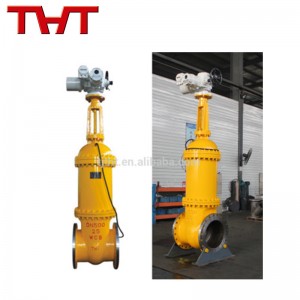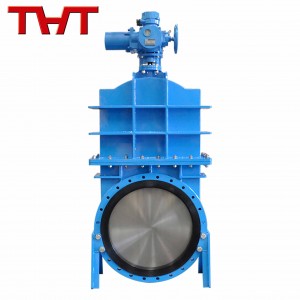Hydraulic Wedge Gate Valve
Hydraulic wedge gate valve DN400 PN25
1. Description and Key Features
A Hydraulic Wedge Gate Valve is a linear motion valve where a wedge-shaped disc (gate) is raised or lowered by a hydraulic actuator to control the flow of fluid.
Key Features for this size and class:
- Full Bore Design: The internal diameter matches the pipe (DN400), resulting in very low pressure drop when fully open and allowing for pipeline pigging.
- Bidirectional Flow: Suitable for flow in either direction.
- Rising Stem: The stem rises as the valve is opened, providing a clear visual indication of the valve’s position.
- Metal-to-Metal Sealing: Typically uses a wedge and seat rings that are hard-faced (e.g., with Stellite) for erosion and wear resistance.
- Robust Construction: Designed to handle high pressures and forces, resulting in a heavy and durable body, often from cast or forged steel.
2. Main Components
- Body: The main pressure-containing structure, typically made from Carbon Steel (WCB) or Stainless Steel (CF8M/316SS). Flanged ends (e.g., PN25/ASME B16.5 Class 150) are standard for DN400.
- Bonnet: Bolted to the body, houses the stem and provides a pressure boundary. Often an extended bonnet is used for insulation purposes.
- Wedge (Gate): The key sealing component. For PN25, a Flexible Wedge is common. It has a cut or groove around its perimeter that allows the wedge to flex slightly, improving sealing and compensating for minor changes in seat alignment due to thermal expansion or pipe stress.
- Stem: A high-strength threaded shaft (e.g., SS420 or 17-4PH Stainless Steel) that transmits the force from the actuator to the wedge.
- Seat Rings: Hard-faced rings pressed or welded into the body against which the wedge seals. They create the tight shut-off.
- Packing: A seal (often graphite for high temperatures) around the stem, contained in a stuffing box, to prevent leakage to the environment.
- Hydraulic Actuator: A piston-style or scotch yoke actuator powered by hydraulic pressure (typically oil). It provides the high torque/thrust required to operate a large DN400 valve against high differential pressure.
3. Working Principle
- Opening: Hydraulic fluid is ported into the actuator, moving the piston. This motion is converted to a rotary (scotch yoke) or linear (linear piston) motion that rotates the valve stem. The stem threads into the wedge, lifting it completely into the bonnet, unobstructing the flow path.
- Closing: Hydraulic fluid is ported to the opposite side of the actuator, reversing the motion. The stem rotates and pushes the wedge down into the closed position, where it is firmly pressed against the two seat rings, creating a seal.
Critical Note: This valve is designed for isolation (fully open or fully closed). It should never be used for throttling or flow control, as this will cause vibration, cavitation, and rapid erosion of the wedge and seats.
4. Typical Applications
Due to its size and pressure rating, this valve is used in demanding industrial applications:
- Water Transmission & Distribution Mains: Isolating sections of large pipelines.
- Power Plants: Cooling water systems, feedwater lines.
- Industrial Process Water: Large-scale industrial plants.
- Desalination Plants: High-pressure reverse osmosis (RO) lines.
- Mining and Mineral Processing: Slurry pipelines (with appropriate material selection).
5. Advantages and Disadvantages
| Advantages | Disadvantages |
|---|---|
| Very low flow resistance when open. | Slow to open and close. |
| Tight shut-off when in good condition. | Not suitable for throttling. |
| Bidirectional flow. | Prone to seat and disc wear if misused. |
| Suitable for high-pressure applications. | Large space required for installation and stem movement. |
| Allows for pipe pigging. | Heavy, complex, and expensive (valve + hydraulic power unit). |
6. Important Considerations for Selection and Use
- Material Selection: Match body/wedge/seat materials (WCB, WC6, CF8M, etc.) to the fluid service (water, corrosivity, temperature).
- End Connections: Ensure flange standards and facing (RF, RTJ) match the pipeline.
- Hydraulic Power Unit (HPU): The valve requires a separate HPU to generate hydraulic pressure. Consider the required operating speed, pressure, and control (local/remote).
- Fail-Safe Mode: The actuator can be specified as Fail-Open (FO), Fail-Closed (FC), or Fail-in-Last-Position (FL) depending on safety requirements.
- By-Pass Valve: For high-pressure applications, a small by-pass valve (e.g., DN50) is often installed to equalize pressure across the wedge before opening the main valve, reducing the required operating torque.
In summary, a Hydraulic Wedge Gate Valve DN400 PN25 is a high-performance, heavy-duty workhorse for completely stopping or starting the flow of water in large, high-pressure pipelines. Its hydraulic operation makes it suitable for remote or automated critical isolation points.
